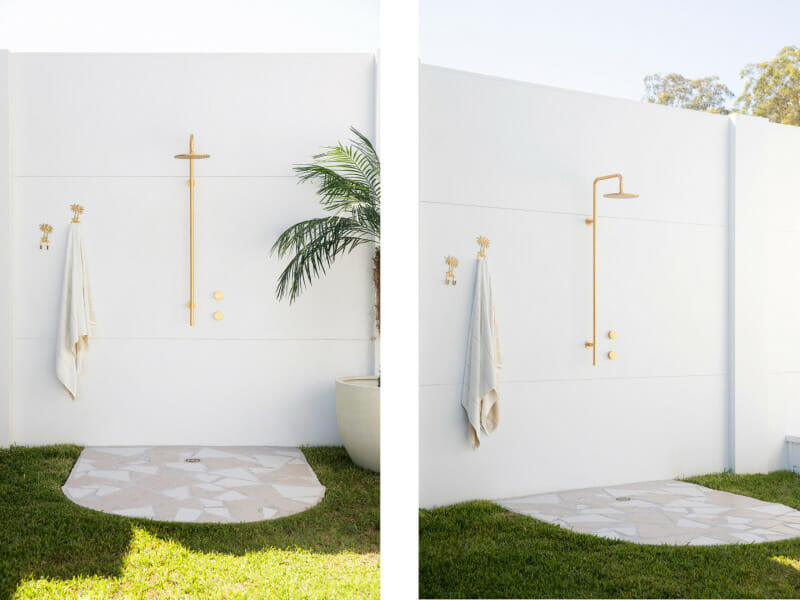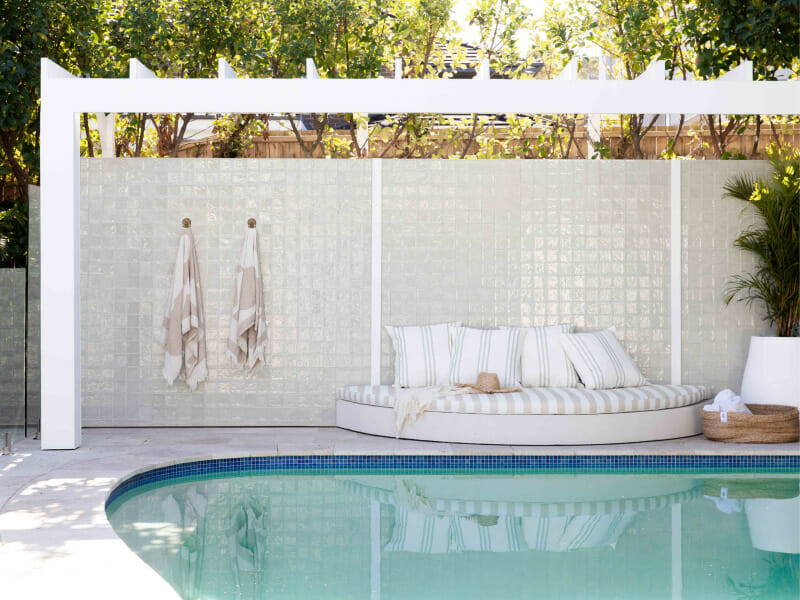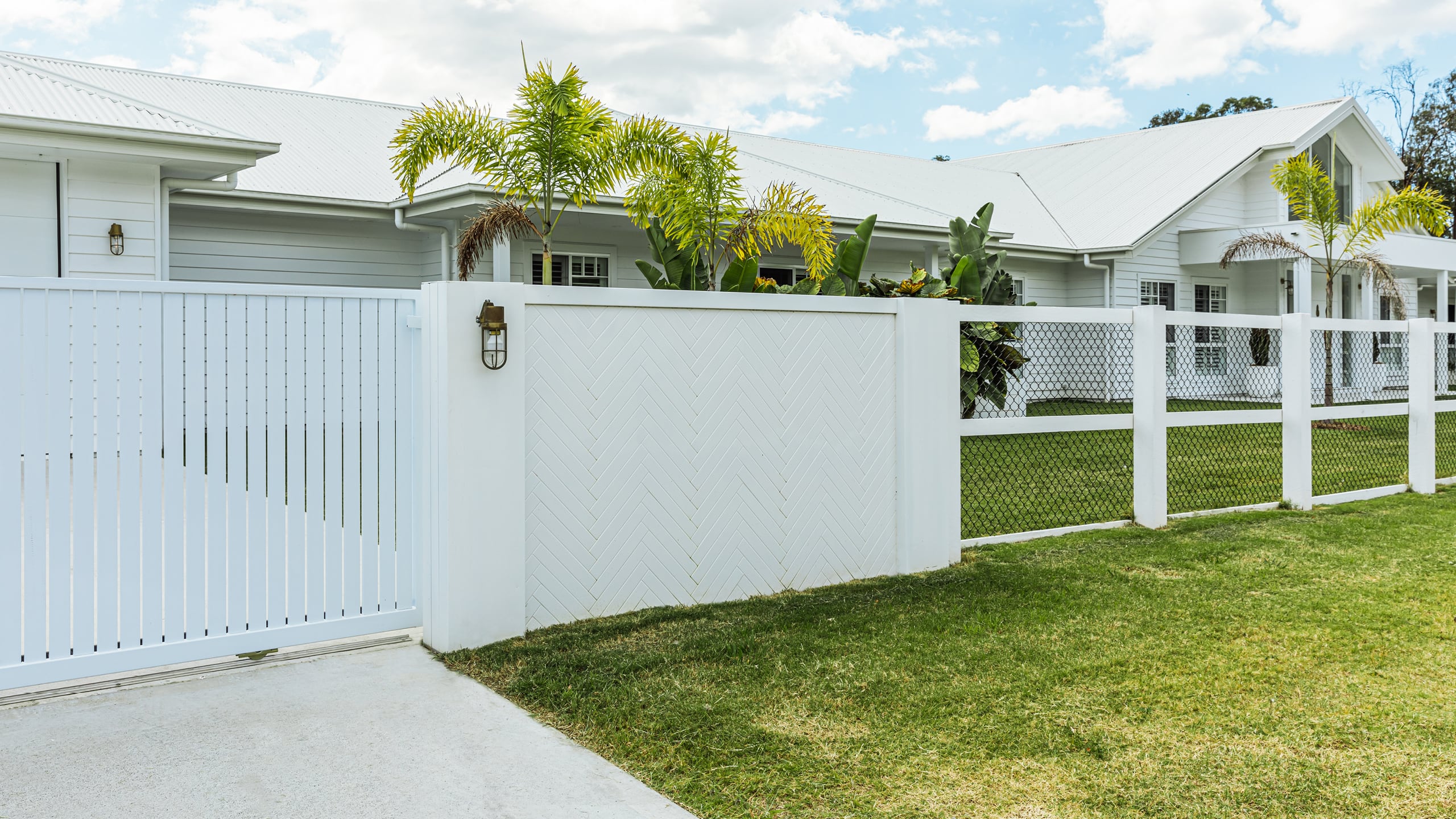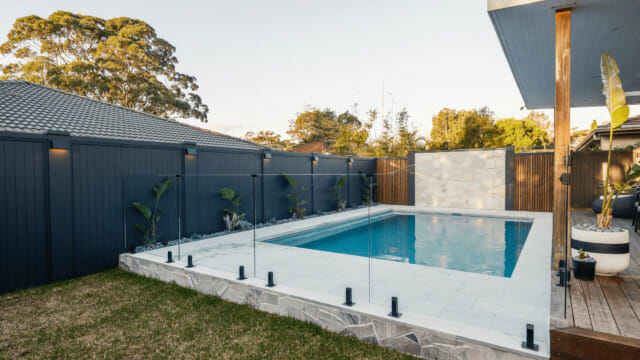Such a tiny line, such a big question. In this article, we dive into how to hide the join line of your ModularWalls fence panels.

Don’t hide the join line between fence panels

Read the case study: Three Birds Renovations House 13 — EstateWall
Yeah, we know, it’s not the answer you wanted. But, as the saying goes, ‘if it ain’t broke, don’t fix it.‘
Most customers either don’t notice the join line or simply consider it a wall design feature. Furthermore, a poorly covered join line can look much worse than when you started, so weigh up if it’s worth trying to fill it in. However, if it’s important to you, here’s what we suggest.
Using acrylic render on your fence panels
You can cover the fence panels with an acrylic render to achieve a professional finish. Note that this render is applied to the panels only. The posts and capping will need to be finished with an exterior-grade paint or texture paint, such as Dulux’s Acratex Acrasand, as they do not accept renders.
If you have Flush wall capping, you can also render over this. However, to stop any possible movement and cracking in the render, the capping should first be glued on and riveted (with a countersunk rivet) through the capping and fibre cement sheet.
You can render up to the underside of External (or box-style) wall capping. So, while it costs more than standard paint, it will effectively cover that join line. And you’re still saving money compared to installing a rendered brick wall.
We recommend watching the entire video for correct priming and painting techniques. However, if you’re short on time, jump to 3min 11 secs to see how to hide the join line.
Can I cover the join line with a polyurethane sealant?
Since our installation requires a sealant like Sikaflex or FLEXIT, customers always ask if they can also use this to cover the join line.
While we have seen customers do this before, we don’t recommend it. Doing so leaves a shiny, brighter surface that shows through the paint. In fact, the join line can look more obvious this way! We recommend avoiding this technique altogether.
What about external fillers?
Filling the join line with an external filler and sanding it back can also look terrible. Covering the join line on your fence panels takes a reasonably high level of craftsmanship, as seen in the video above. We take great pride in our finished walls’ appearance and want happy customers. Therefore, when you purchase our premium walls and fences, we want to be honest and ensure you achieve the best result possible.
Tiling or cladding your fence panels

Read the case study: Three Birds Renovations House 13 — SlimWall pool wall with tiles
Another way to cover the join line is to tile or clad the fence panels. Of course, this option is most suited to shorter wall lengths.
However, for feature walls, pool walls, outdoor kitchen splash-backs or front entrances, it creates a stunning effect that adds a designer element to your property.
Use our Expressed Joint feature on your fence panels
In design, there is the belief that sometimes the best way to transform or conceal a design detail is to embrace it as a feature, so we’ve done this with our Expressed Joint option.
By making the panel join a design feature, you can introduce a unique lineal structure and architectural edge to your wall or fence design. Many designers use Express Joints as a standout feature, including The Block’s Alisa & Lysandra.
We hope this helps you choose whether you wish to cover the join line on your ModularWalls fence panels or use it to create a feature. If you’re still undecided, head to our gallery to see a range of stunning walls and fences with and without covering the join line.



